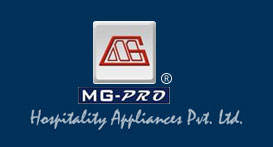- Home
- About Us
- Products
- Upright Reach In Refrigerators & Freezers
- Table Top / Undercounter Refrigerators & Freezers
- Salad /Pizza – Prepstation Or Raise Bain Marie Refrigerated Counters
- Bottle Coolers
- Upright Refrigerated Displays
- Confectionery Showcases - Pastry Display Cabinets
- Open-deck - Multideck Chillers
- Cupboard Chillers And Freezers
- Chest freezers
- Water Coolers
- Water Purifiers And Treatment Solutions
- Services
- Info Centre
- Contact Us
HACCP Awareness Document
The Seven Principles of HACCP
- Hazard Analysis
- Identify the Critical Control Points
- Establish Critical Control Limits
- Establish Procedures to Monitor the Critical Control Points
- Establish the Corrective Action Plan
- Establish a Record-Keeping System
- Verify that the HACCP is working
Hazard Analysis
First, begin with a review of entire systems to identify the places where potential hazards can occur. Then, analyze the flow of process through the facility by constructing a flowchart to assess the opportunities for contamination and bacteria growth.
- The flow diagram is the path of the product from raw material to finished product.
- A flow diagram that delineates the steps in the process from receipt to the customer forms the foundation for application of the seven principles.
- The significant hazards associated with each step in the flow diagram should be listed along with the proposed preventative measure to control the hazards.
Hazards can be biological, chemical or physical and the analysis of hazards should follow the flow of process through every phase:
Identify the Critical Control Points
As you know, a Critical Control Point is a point, step, or procedure where control can be applied and a food safety hazard can be prevented, eliminated, or reduced to an acceptable level.
Establish Critical Control Limits
- Critical limits may be thought of as boundaries of safety for each CCP.
- Each CCP will have one or more critical limit to assure the prevention or elimination of hazards, or the reduction of hazards to acceptable levels.
Establish Procedures to Monitor the CCPs
Monitoring serves three purposes:
- Tracking of the system's operation
- Indicating when loss of control or a deviation has actually taken place
- Providing written documentation for use in verifying the HACCP plan
- Monitoring means active supervision, not just telling workers to document.
- The most effective monitoring is accomplished by insisting upon documentation, such as temperature logs of critical activities.
- Logs must be reviewed daily and sample temperature readings taken to encourage employees to record accurate reading and keep thermometers calibrated.
Establish the Corrective Action Plan
Be prepared in advance should monitoring show that a critical limit has been exceeded. Each CCP will require a specific corrective action in the event of a preparation error. Corrective action procedures must be documented. The purpose is to recognize and correct mistakes, not pass them on or destroy food.
Establish a Record-keeping System
- The first written document is the HACCP plan.
- Records must then be generated during operation that verify preparation steps throughout the flow of food.
- While record keeping takes time, it ultimately makes the system work.
- The absence of records almost guarantees that problems will recur.
- Record keeping forces systematic monitoring on a regular basis.
- Managers must determine that logs are kept accurately, that critical limits are met, examine corrective action, and retrain employees when necessary.
Verify that the HACCP is working
First, verify that the CCPs and critical limits are appropriate. You can ask your sanitarian, or research it using the MHEF.org website or other source if you question your plan. Make certain that every critical control point and critical limits meets or exceed the applicable requirement established by local government laws.
- Next, determine if your plan is working effectively.
- Review your recipes regularly for accuracy, ingredient use, and yield.
- Check all controls, documentation procedures, and corrective measures.
- Modify the HACCP as the review dictates.
